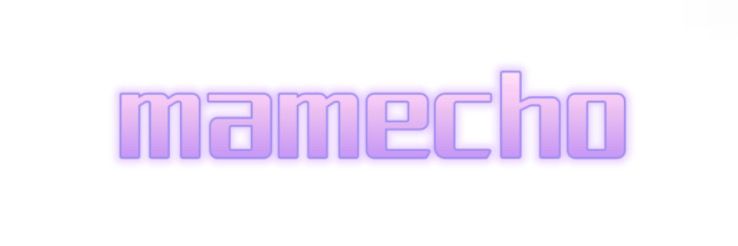Fiber Laser Cutting Solution vs. Traditional Methods: Which is Best?
Nov. 12, 2025
In the world of manufacturing and fabrication, choosing the right cutting method can significantly influence both efficiency and product quality. Today, many businesses are torn between traditional cutting methods and cutting-edge technology like fiber laser cutting. Understanding the advantages and drawbacks of each approach is crucial for making informed decisions that align with your operational needs.
The company is the world’s best Fiber Laser Cutting Solution supplier. We are your one-stop shop for all needs. Our staff are highly-specialized and will help you find the product you need.
What is Fiber Laser Cutting?
Fiber laser cutting is a modern technique that utilizes laser technology to cut through various materials. It employs a high-intensity beam produced by a fiber laser, which is known for its precision and efficiency. This method can handle a wide range of materials, including metals, plastics, and even wood, making it incredibly versatile for different applications.
Advantages of Fiber Laser Cutting
1. Precision and Quality
One of the standout features of fiber laser cutting is its ability to achieve remarkable precision. The focused laser beam allows for clean cuts with minimal kerf width, leading to less waste and improved yield. This precision is particularly advantageous in industries like aerospace and automotive, where tolerances are critical.
2. Speed and Efficiency
Fiber laser cutting is known for its rapid processing speeds. Compared to traditional methods such as plasma or oxy-fuel cutting, fiber lasers operate at much higher speeds, which minimizes production time. The ability to program cuts with software also means that complex designs can be produced quickly, thus enhancing overall efficiency.
3. Material Versatility
Fiber lasers can cut through a variety of materials, from thin sheets to thick plates. They are particularly effective on reflective metals like copper and brass, which can be challenging for other cutting methods. Thanks to this versatility, businesses can streamline their operations and avoid the need for multiple machines.
4. Lower Operating Costs
While the initial investment for fiber laser cutters may be higher than some traditional equipment, the long-term savings can be significant. The reduced wear on parts, lower energy consumption, and minimal material wastage can lead to lower operational costs over time. Additionally, the maintenance of fiber lasers is typically lower, contributing to cost-efficiency.
Disadvantages of Fiber Laser Cutting
1. Initial Investment
As previously mentioned, the upfront cost of fiber laser systems can be substantial. Small to medium-sized businesses may find it challenging to allocate the necessary budget for this advanced technology, even if it promises long-term savings.
2. Complexity of Setup
Fiber laser cutting systems often require specialized training for operators. The technology may seem daunting at first, especially for teams accustomed to traditional methods. This learning curve could lead to initial slowdowns as employees adapt to the new equipment.
Traditional Cutting Methods: A Brief Overview
Traditional cutting methods such as oxy-fuel, plasma, and mechanical cutting have been mainstays in manufacturing for decades. Each has its unique advantages and drawbacks.
Oxy-Fuel Cutting
Oxy-fuel cutting is an age-old method that employs a combination of oxygen and fuel gas. It's especially effective for cutting thick materials, but the quality may not match that of laser cutting. The process generates more heat and can lead to warping, which is a concern for precision work.
Plasma Cutting
Plasma cutting offers faster speeds compared to oxy-fuel, especially for thinner metals. However, the cuts may not be as clean or precise as those achieved with fiber lasers. Additionally, plasma cutting is generally less effective on reflective metals.
Mechanical Cutting
Mechanical cutting techniques utilize tools like saws or shears. While these methods can produce good quality cuts, they often involve slower speeds and require more manual labor, which can drive up costs and reduce productivity.
Fiber Laser Cutting vs. Traditional Methods: Which is Best?
When evaluating which cutting technique is best, the answer largely depends on your specific application, budget, and production needs.
If precision, speed, and versatility are paramount, fiber laser cutting is increasingly considered the superior option. It is particularly well-suited for contemporary manufacturing environments that demand high-quality results with minimal waste.
Conversely, if your business primarily deals with thick materials or you have budget constraints, traditional methods may still hold value. It's not uncommon for companies to use a combination of both methods, leveraging the strengths of each to address varying project requirements.
Conclusion
The choice between fiber laser cutting and traditional methods is not a one-size-fits-all scenario. By understanding the unique advantages and limitations of each approach, you can make a more informed decision that aligns with your operational objectives. Whether you opt for the modern, precision-driven fiber laser or rely on tried-and-true traditional methods, the key is to ensure that your choice enhances your overall manufacturing efficiency and product quality.
If you are looking for more details, kindly visit Plate Cutting Machines.
34
0
0
All Comments (0)
If you are interested in sending in a Guest Blogger Submission,welcome to write for us!



Comments